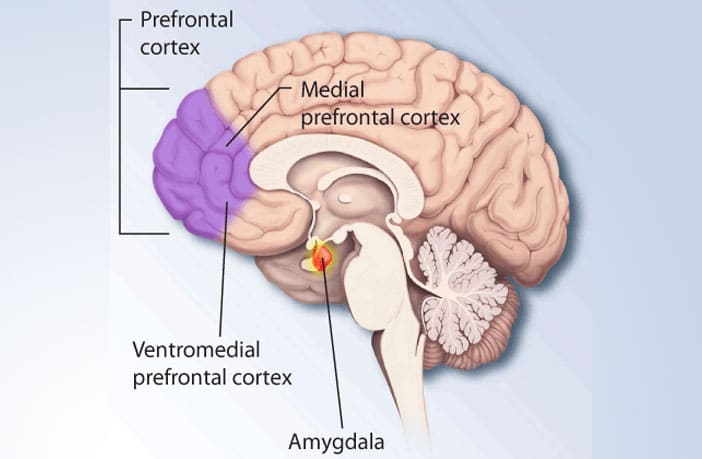by Lauren Graf, Neuroscience Major at Kenyon College, Class of 2020
I am a junior neuroscience major at Kenyon, and I am taking a class on the Behavioral Neuroscience of Adolescence. One of the requirements of the class is to present the neuroscientific findings of a topic of interest to the community. I chose to focus on physical activity in children and adolescents, which I then presented information about to the Knox County School Board.
Children and adolescents are not getting the amount of physical activity needed to maintain a healthy lifestyle. Exercising helps to keep both our body and our brains healthy and functioning at high levels. The CDC recommends that students in elementary through high school have at least a 20 minute recess, physical education, and physical activity in the classroom each day. School takes up a lot of adolescents’ time during the day, and it primarily requires them to remain seated for a large portion of that time. However, physical activity may actually improve children’s performance in school. I will discuss the neuroscientific findings behind this and the ways in which we could improve children’s amount of physical activity during school.
Students who achieve higher fitness levels also achieve higher scores academically. Chomitz of Tufts University and her colleagues tested children in Cambridge Public Schools in fourth through eighth grade. They compared their fitness level, as determined by passing 5 fitness tests, to their academic achievement, which was measured by MCAS Mathematics and English scores (Chomitz et al., 2009). The researchers concluded that there was a significant positive relationship between number of fitness tests passed and achievement on the exams. The more fitness tests passed, the better the students did on the exams. How might physical activity have a positive impact on increased cognitive function? First, executive functioning refers to the higher-level cognitive processing associated with goal-directed behavior, which can include inhibition, flexibility, and working memory. The prefrontal cortex, or PFC, is an important area associated with executive functioning. Tuckmann and colleagues provided evidence that children in elementary and middle school who participated in running for 30 minutes per day, 3 to 5 days per week, had increased improvement in creativity and flexibility based on improvements in the Alternate Uses Test and the Torrance Test of Creative Thinking. Davis et al. had children participate in aerobic games, such as running games or basketball, for 20 or 40 minutes, and then measured their executive functioning capabilities as compared to a control group. The results were improved performance in executive functioning tasks as measured by the Cognitive Assessment System, along with an increase in mathematic achievements and increased PFC activation for children who participated in the games.

Source: https://www.psypost.org/2017/06/depressed-people-medial-prefrontal-cortex-exerts-control-parts-brain-49168
Not only does exercise help to improve higher-level cognitive functioning, but studies from Holmes and van Praag have shown that aerobic exercise increases regulation of growth factors in the brain, including the brain-derived neurotropic factor, or BDNF, which is important in the neurogenesis, or growth of brain cells, particularly in the hippocampus. The hippocampus is an area of the brain associated with memory, so when there are greater amounts of BDNF in the brain, there are more hippocampal cells which can help to facilitate learning and memory.


Source: https://www.epilepsyresearch.org.uk/the-hippocampus-what-is-it/
Based on these findings, it is evident that at least 30 minutes of physical activity is crucial for children, and can help them to attain high academic achievements. Schools must find more time and ways to integrate physical activity into the school day, as well as promote active play activities outside of school. These can include creating lesson plans that get them outside, playing a game that involves some sort of physical activity, and continuing physical education year-round, all the way through high school. A new athletic facility is being built for the community, which would also be a great resource for adolescents to use. These are all ways that can get students moving which leads to optimal brain function and increased academic performance.
References
Abdelbary, M. (2017). Learning in Motion: Bring Movement Back to the Classroom. Teacher Education Week.
Adolescent and School Health | CDC. (n.d.).
Best, J. R. (2010). Effects of Physical Activity on Children's Executive Function: Contributions of Experimental Research on Aerobic Exercise. Developmental review : DR, 30(4), 331-551.
Chomitz, V. R., Slining, M. M., McGowan, R. J., Mitchell, S. E., Dawson, G. F., Hacker, K. A. (2009). Is there a relationship between physical fitness and academic achievement Positive results from public school children in the northeastern United States. Journal of School Health.79, 30-37.
Holmes, P. V. (2006). Current findings in neurobiological systems' response to exercise. In: L. Poon, W. Chodzo-Zajko, P. D. Tomporowski (Eds.), Active living, cognitive functioning, and aging (pp. 75–89). Champaign, IL: Human Kinetics.
van Praag, H. (2006). Exercise, neurogenesis, and learning in rodents. In: E. O. Acevedo & P. Ekkekakis (Eds.), Psychobiology of physical activity (pp. 61–74). Champaign, IL: Human Kinetics.




